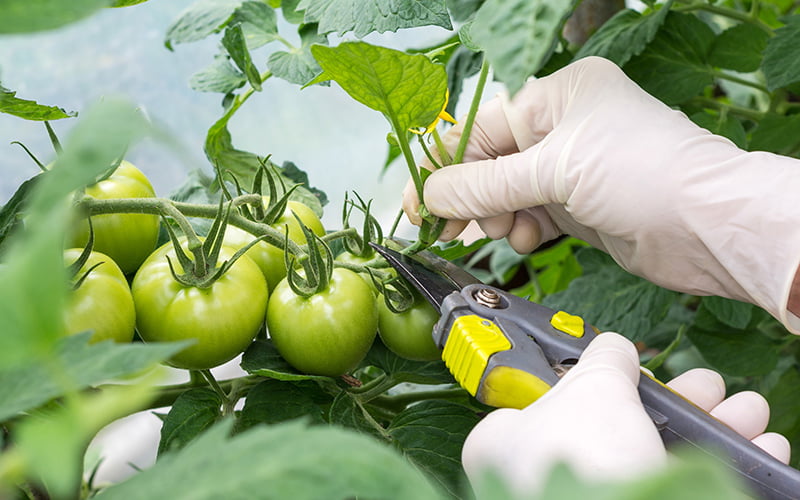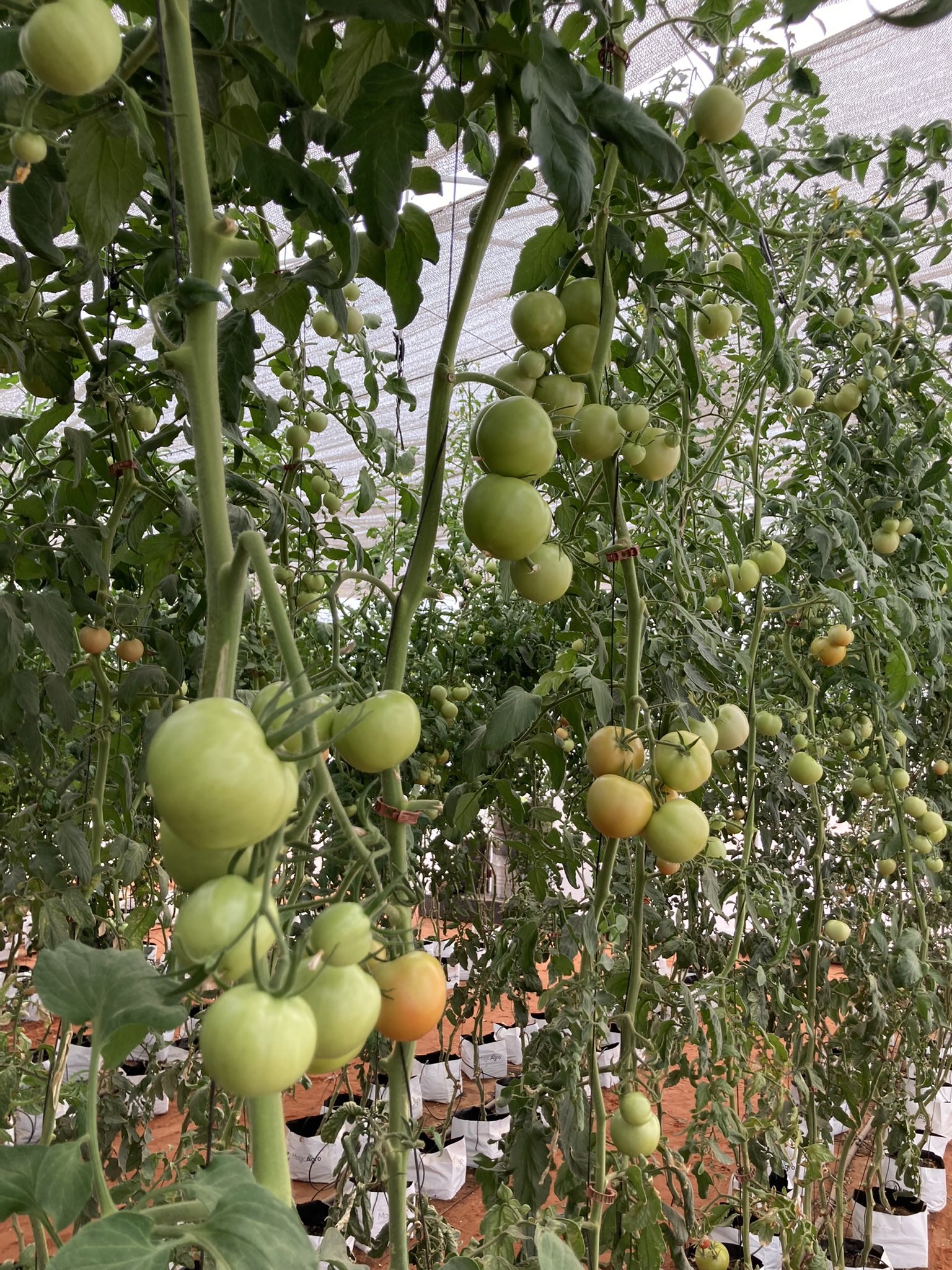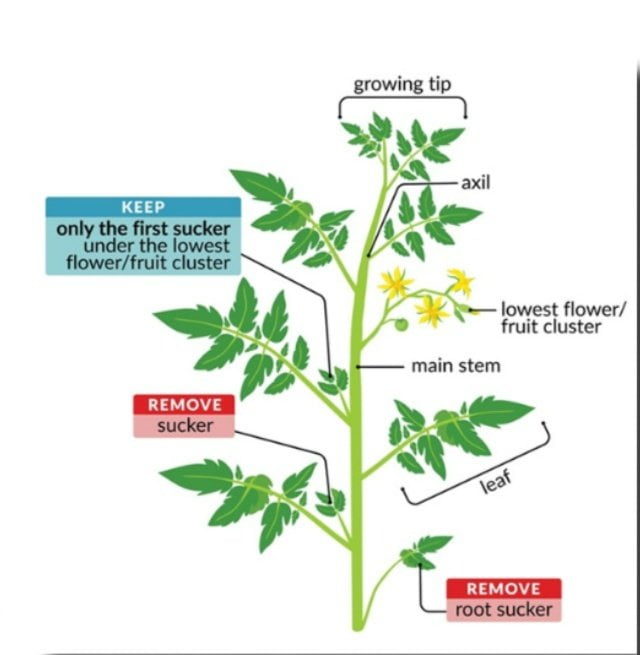
Hey there, green thumbs! So, you’ve decided to dive into the world of container gardening and grow some luscious tomatoes, huh? Well, you’re in for a juicy treat! But wait, should you prune tomato plants in containers? Ah, that’s the million-dollar question, my friend. Fear not, for this comprehensive guide is here to help you make that decision like a true gardening guru.
Table of Contents
Should You Prune Tomato Plants In Containers? An Introduction to the Debate

Pruning or not pruning, that is the question! Let’s delve into the world of tomato plants in containers and figure out whether they need a little trim to thrive or if we should let them grow wild and free like a garden party gone wild.
Benefits Of Pruning Tomato Plants
Ah, pruning, the art of snipping away the excess. Picture this: you’re tending to your tomato plants in containers, and you spot some unruly growth that looks like it’s partying too hard. Pruning can be a lifesaver here! Here’s why:
- Enhanced Air Circulation: Pruning those extra leaves creates some space for your plants to breathe. Like giving them their very own green yoga retreat!
- Disease Prevention: Fewer leaves mean less moisture and fewer spots for diseases to crash the party. You’re the bouncer, keeping the bad bugs out!
- Energy Redirection: Your tomato plants are no strangers to the dance floor! By trimming, you redirect their energy to the party’s real stars – the fruits themselves.
Disadvantages Of Pruning Tomato Plants In Containers
Hold on, cowboy! Before you grab those pruning shears, let’s hear the other side of the story. Some folks swear by letting those tomato plants run wild and free. Here’s why they say “hands off!” when it comes to pruning:
- More Foliage, More Photosynthesis: All those leaves are like the plant’s solar panels, soaking up sunlight and converting it into plant food. “Leave it be,” they say!
- Natural Pest Control: Some defenders of the untamed tomato plant argue that the extra leaves attract beneficial insects, like the party’s own security guards.
- Stress-Free Zone: Pruning can be stressful for the plant. So, they advocate for a carefree, anything-goes garden atmosphere.
How to Prune Tomato Plants in Containers: The Step-by-Step Guide

Ready to take the plunge and become a pruning pro? Here’s a step-by-step guide on how to do it like a seasoned gardener:
Arm Yourself with the Right Tools
Before you dive into the art of pruning tomato plants in containers, make sure you have the right tools at your disposal. Armed with the essential equipment, you’ll be ready to trim those plants like a seasoned pro. Here’s what you’ll need:
- Pruning Shears:
Think of pruning shears as your trusty sidekick in this horticultural adventure. Look for a sharp pair that allows for precise cuts, as clean cuts are crucial for the health of your tomato plants. With these handy shears, you’ll be able to snip away unwanted parts with ease.
- Gloves:
Don’t underestimate the importance of protecting your green thumbs! A good pair of gardening gloves will shield your hands from thorns, prickles, and potential irritants that may lurk in the tomato plant foliage. Your gloves will be your shield throughout the pruning process, ensuring you can handle the task comfortably.
So, there you have it – a sharp pair of pruning shears and a reliable set of gloves. With these tools in hand, you’re ready to take on the challenge of pruning your tomato plants in containers.
Know the Players

In the world of tomato plant pruning, it’s essential to know the players and understand their role in the grand gardening scheme. The primary actors we’re looking for are called “suckers.” These sneaky little stems tend to pop up between the main stem and the branches of your tomato plant.
Picture them as the mischievous sidekicks of your main plant, attempting to steal precious resources and divert energy away from fruit production. But fear not, dear gardener, for you hold the power to reign in these suckers and bring balance to your tomato plant kingdom.
Identifying the suckers is the first step to mastering the art of pruning. Once you’ve located these small stems, you’ll be ready to prune them away with finesse, encouraging healthier growth and a bountiful harvest. So, keep a keen eye out for those suckers, and get ready to snip them like a pro!
Choose Your Pruning Style
Ah, the moment of decision has arrived, young gardener! As you embark on your pruning journey, you’ll be faced with a crucial choice: which pruning style to embrace? Fear not, for I shall shed light on the two popular approaches, and you can decide with wisdom in your heart.
Single Stem:
Picture your tomato plant as a determined lone warrior, channeling all its energy and focus into a single powerful stem. In the single stem approach, you’ll remove all those sneaky suckers that dare to sprout between the main stem and the branches. This method creates a more streamlined and structured plant, akin to a disciplined soldier standing tall and strong.
Pros:
- All the plant’s energy goes towards one main stem, potentially resulting in larger, well-formed fruits.
- Easier to manage and support, especially in limited space.
Cons:
- Fewer branches mean fewer tomatoes, so expect a more moderate harvest.
Multiple Stems:
Now, imagine your tomato plant as a cheerful, lively ensemble, with several sidekicks dancing alongside the main stem. Embracing multiple stems involves allowing a few well-chosen suckers to grow alongside the main stem, creating a fuller, more branching plant.
Pros:
- More branches mean more potential for fruit production, leading to a potentially larger harvest.
- A bushier plant can provide better coverage and protection for fruits.
Cons:
- Pruning can be slightly more complex, as you’ll need to select and manage the additional stems carefully.
- The plant may require more support to prevent sprawling.
Now, young gardener, the choice is yours! Each pruning style has its merits and challenges. Consider your container size, available space, and gardening goals when making this critical decision. Whether you opt for the disciplined single stem or embrace the bushiness of multiple stems, remember that your nurturing touch will guide your tomato plants to thrive and bear the fruits of your labor.
Pruning Technique

Ah, the moment of truth! The time has come to put your pruning shears to work and show those suckers who’s boss. Here’s the pruning technique you’ve been waiting for:
Technique 1: The Pinch-and-Remove Method
Welcome to the glamorous world of tomato plant hairstyling, where you, dear gardener, play the role of a skilled artist with nimble fingers! Allow me to introduce you to the “Pinch-and-Remove” method – a delicate, yet effective technique for pruning tomato plants.
- Picture Yourself as a Tomato Plant Hairstylist:
Close your eyes and envision yourself in a chic salon, but instead of tending to human locks, you’re surrounded by lush tomato plants. As their dedicated hairstylist, you’ll be employing the gentle art of pinching and snipping to create a masterpiece.
- Seek Out the Young and Tender:
With your keen eye, spot those young, tender suckers as they emerge between the main stem and branches. These are the ones you’ll be focusing on during this hairstyling extravaganza.
- Pinch and Snip with Grace:
Just like an artist shaping a masterpiece, use your nimble fingers to pinch off the suckers. Gently grasp the young stems between your fingertips and give them a tender pinch.
- Make the Removal a Breeze:
With a swift motion, snap your fingers, and like magic, the suckers are gone! Removing them when they’re young and tender makes the process a breeze, and your tomato plants will thank you for it.
- Why the Pinch-and-Remove Method Shines:
This technique is not only efficient but also beneficial for the overall health of your tomato plants. By pinching off the suckers when they’re still small, you encourage the plant to focus its energy on fruit production, leading to plump and juicy tomatoes.
- A Touch of Artistry:
Like any true artist, practice and patience are key to mastering the Pinch-and-Remove method. Observe your plants closely, develop a feel for their growth patterns, and with time, you’ll become a true tomato plant hairstyling virtuoso!
Technique 2: The Pruning Shears Precision
Step into the operating room of your garden, where you, the skilled surgeon of horticulture, wield the trusty pruning shears with precision and finesse. Welcome to the realm of “Pruning Shears Precision” – a surgical approach to shaping your tomato plants with the utmost care.
- Enter the Surgical Suite:
As you gear up for this delicate operation, imagine yourself donning a white coat, your pruning shears glinting like surgical instruments. You’re about to perform an intricate procedure that will bring out the best in your tomato plants.
- Unveil the Trusty Pruning Shears:
Like a surgeon reaching for their scalpel, grasp your trusty pruning shears with a steady hand. These sharp, dependable tools are your allies in this precision-based pruning technique.
- Target the Suckers:
With a trained eye, locate the suckers vying for attention between the main stem and branches. These are the interlopers that require your surgical expertise.
- A Clean Cut is Key:
Approach the task with the poise and composure of a seasoned surgeon. Make your incision with a clean, decisive cut, ensuring minimal disturbance to the surrounding plant tissues.
- As Delicate as a Petal:
Treat each cut as if you were handling a fragile petal. Your gentle touch ensures the health of the main stem while effectively removing the suckers that threaten its glory.
- Why Pruning Shears Precision Shines:
The Pruning Shears Precision technique excels in creating clean wounds, promoting swift healing and reducing the risk of infections. Your tomato plants will thrive, thanks to your surgical finesse.
- Embrace the Art of Pruning Surgery:
Remember, every surgeon hones their skills through practice, and so shall you. As you gain experience, your pruning techniques will become second nature, and your tomato plants will flourish under your expert care.
In the realm of gardening surgery, the Pruning Shears Precision technique reigns supreme. Armed with your trusty pruning shears and a steady hand, you’ll sculpt your tomato plants into stunning works of art. So, step into the role of the master surgeon, and let the delicate operation begin! May your tomato plants thrive under your skilled touch, and may your garden flourish like a blossoming oasis.
Technique 3: Timing is Everything
Ah, my gardening confidante, allow me to impart a valuable lesson that seasoned gardeners hold dear – “Timing is Everything” when it comes to pruning your precious tomato plants. Let’s delve into the art of timing and how it can make a world of difference in your pruning endeavors.
- The Crucial Role of Timing:
Picture time as the conductor of your gardening orchestra, setting the rhythm for optimal plant growth. Timing plays a pivotal role in ensuring your tomato plants thrive under the gentle touch of pruning.
- Embrace the Morning Hours:
As the sun begins to rise, and the world awakens, seize the opportunity to don your gardening gloves. Early mornings are the golden hours for pruning your tomato plants in containers.
- Cooler Temperatures, Calmer Plants:
In the early hours, the temperatures are gentler, and your tomato plants are still rejuvenated from the night’s rest. Pruning during this time minimizes stress on the plants, allowing them to heal and recover swiftly.
- Why Timing Matters:
Pruning during cooler hours reduces the risk of heat stress and dehydration that can occur when pruning in the scorching heat of the day. By choosing the right time, you set your tomato plants up for a successful recovery and robust growth.
- Listen to Nature’s Rhythm:
As a gardener, attune yourself to the natural rhythms of the garden. Observe how your tomato plants respond to pruning during different times of the day, and let nature guide your pruning schedule.
- The Morning Ritual:
Make the morning pruning session a cherished ritual in your gardening routine. Savor the tranquility of the early hours and connect with your plants on a deeper level.
In the world of gardening, timing is a symphony of harmony and balance. By pruning your tomato plants early in the morning when temperatures are cooler, you set the stage for a beautiful performance of growth and vitality. So, my gardening friend, listen to the rhythm of nature, embrace the morning hours, and let the gentle art of pruning unfold with grace.
Take It Easy
Ah, my dear gardening enthusiast, let me impart a word of wisdom as you embark on your pruning journey: Take it easy, take it slow! Pruning is an art that requires finesse and balance, much like a delicate dance between shaping your plants and avoiding overzealousness.
- Prune with Caution:
As you wield your pruning shears, remember to approach the task with caution. While it’s tempting to snip away at every sucker in sight, resist the urge to go overboard. Over-pruning can stress your tomato plants, hindering their growth and fruit production.
- Respect the Balance:
Think of your tomato plant as a graceful performer on the gardening stage. Just as a dancer finds harmony in movement, so too must you seek balance in pruning. Maintain a balance between shaping your plant for optimal growth and leaving enough foliage to support its overall health.
- The Goldilocks Rule:
Not too much, not too little – just right! Be mindful of finding that sweet spot when pruning. Remove enough suckers to improve airflow and sunlight exposure, but leave sufficient foliage to nurture the plant’s energy reserves.
- Observe and Learn:
Pruning is a skill that improves with practice and observation. Pay close attention to how your tomato plants respond to each pruning session. Watch for signs of healthy growth, such as new shoots and vibrant leaves, to gauge the effectiveness of your technique.
- Time and Patience:
Anything good does not come easy, and neither is a thriving tomato plant. Give your plants the time and patience they need to flourish. Regular, gentle pruning sessions throughout the growing season will yield the best results.
In this delicate dance of pruning, you hold the reins to sculpting a thriving container garden. So, go forth with care, take it easy, and let your gardening instincts guide you. With a light touch and a keen eye, you’ll achieve that perfect balance between shaping and overdoing it.
Conclusion:
And there you have it, garden enthusiasts! Pruning tomato plants in containers can be a rewarding endeavor that unlocks the true potential of your garden. Armed with your pruning shears and a wealth of gardening know-how, you’re now equipped to make those tough pruning decisions like a seasoned horticulturist. So, should you prune tomato plants in containers? The answer lies in your gardening heart. Embrace the shears, experiment with your technique, and watch your tomato plants flourish like never before. Happy pruning, fellow green thumbs!
